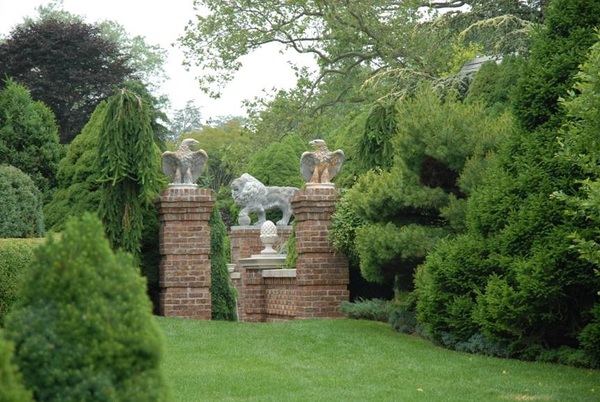
To drive along some of the roads that make up the villages and hamlets on the East End is to experience some of the most striking and innovative landscaping in the world.
Privet hedges 12 feet high, groomed white pines, rows of healthy yews, and tall, willowy bamboo are just a few of the elegant landscaping choices. All speak to a long-standing trend to screen one’s home from the neighbors’ house.
But some may argue that simply running privet, a Hamptons staple, along the property line may result in losing vistas that can expand the feeling of being in a beautiful setting.
“Screening is not a static concept,” Charles Marder, owner of Marders in Bridgehampton, said. “It’s a moving concept. Everyone thinks of it as fixed.”
Mr. Marder said he believes that there are better solutions than “boxing in a property from the world.”
“You have to develop distance from what you are hiding,” he said. “It’s more like chess on five levels. If you box yourself in, there’s a danger in drawing attention to a challenge by blatantly attempting to cover it up,” Mr. Marder explained.
“Ask Nixon,” he said. “You don’t want to attract attention to a problem.”
Instead, he said that he believes in “fracturing a view into a million pieces.” If there are beautiful vistas adjoining the property, one should use these “long, borrowed views,” Mr. Marder advised.
For a problem such as a telephone pole, he recommended using locusts and ginkgos, as their wire-like branches will blend in with the pole, virtually hiding it. To screen a pool from a driveway, Mr. Marder recommends a 10-foot wide planting of rhododendrons, yews and viburnum.
“This works better than privet hedge,” he said.
Galen Williams, proprietor of Galen Williams Landscape Design in East Hampton, agreed with Mr. Marder that every property is unique. She said that working with property owners is akin to being a psychiatrist.
Hedge-versus-fence is “so much a personal decision, but you don’t have to maintain a fence,” she said.
Ms. Williams suggested using vines, clematis, and hydrangeas to make the fence appealing.
“For one client, I used Leyland cypress, which is thick, evergreen and fast growing but not formal,” she said.
Leyland cypress is a particularly good choice, as it is deer-protected, she added. Ms. Williams also recommended new arborvitae, called “green giant.” The new breed is one single branch so it doesn’t split in snowstorms as the old arborvitae did, she said. Spruce is good those who have sun; hemlock for those with shaded properties. But hemlock needs to be sprayed twice a year for insects, Ms. Williams warned.
According to Ms. Williams, natural privet gone wild is cheap to buy and fairly disease-resistant. But “you have to want that look,” she said.
Ms. Williams said she also likes burning bush, such as that planted along the East Hampton parking lot at Lumber Lane. Her favorite reason?
“In September, it’s a brilliant red,” she said.
There are people who use bamboo as a natural barrier, though that particular plant does come with a warning, according to Ms. Williams.
“You need to put 3-foot flashing down to hem it in,” she said. “Or mow it when it comes up. It’s an invader.”
Screening isn’t just about the visual. There can be another reason for putting up a boundary: blocking out unwanted noise.
Stockade fencing, which can be used to screen out the curious, is also effective as a sound barrier, according to Mr. Marder.
“We’ve attached soundproofing to fencing, to screen for noise,” he said. “We sometimes stain the fence chocolate black, so that the soundproof material is camouflaged. We often bury the fence inside the hedge, and into the ground, so that the sound doesn’t go under it. Sound is air.”
Marder said that he believes that not seeing something also reduces sound.
“If you don’t see it, you don’t hear it,” he said.
But there is an etiquette to placing screening materials, in order to be a good neighbor, Ms. Williams said.
“It’s understood, though not a law, I believe, to place the nice side of the stockade fence toward your neighbor,” she said.
But screening isn’t just about what the homeowner and landscaper decide to do; zoning laws play a role as well. There are height limits and restrictions in East Hampton and Southampton towns. It’s best to find out the rules about what is allowed, and what will not fly legally, before undertaking a screening project.